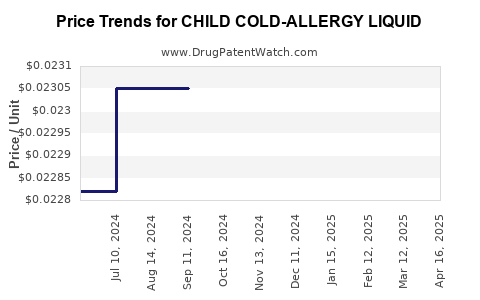Drug Price Trends for CHILD COLD-ALLERGY LIQUID
✉ Email this page to a colleague

Average Pharmacy Cost for CHILD COLD-ALLERGY LIQUID
| Drug Name | NDC | Price/Unit ($) | Unit | Date |
|---|---|---|---|---|
| CHILD COLD-ALLERGY LIQUID | 70000-0057-01 | 0.02277 | ML | 2024-11-20 |
| CHILD COLD-ALLERGY LIQUID | 70000-0057-01 | 0.02247 | ML | 2024-10-23 |
| CHILD COLD-ALLERGY LIQUID | 70000-0057-01 | 0.02305 | ML | 2024-09-18 |
| CHILD COLD-ALLERGY LIQUID | 70000-0057-01 | 0.02305 | ML | 2024-08-21 |
| CHILD COLD-ALLERGY LIQUID | 70000-0057-01 | 0.02305 | ML | 2024-07-17 |
| >Drug Name | >NDC | >Price/Unit ($) | >Unit | >Date |


